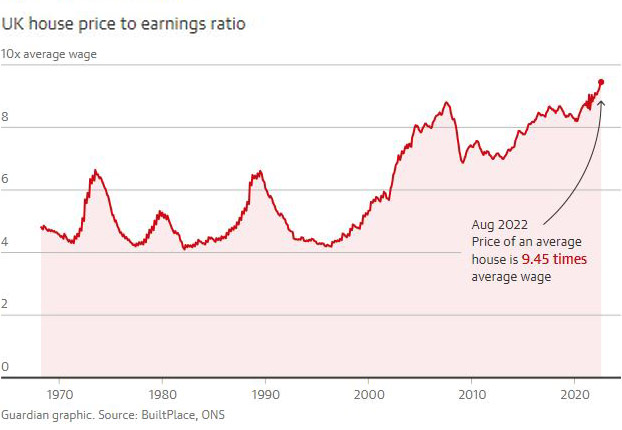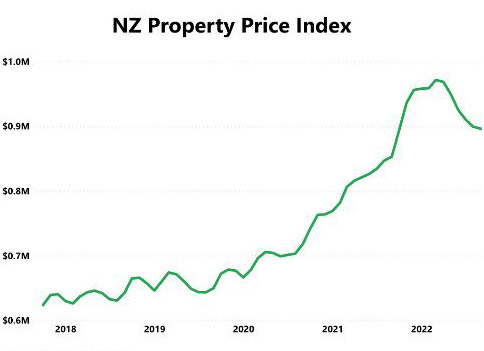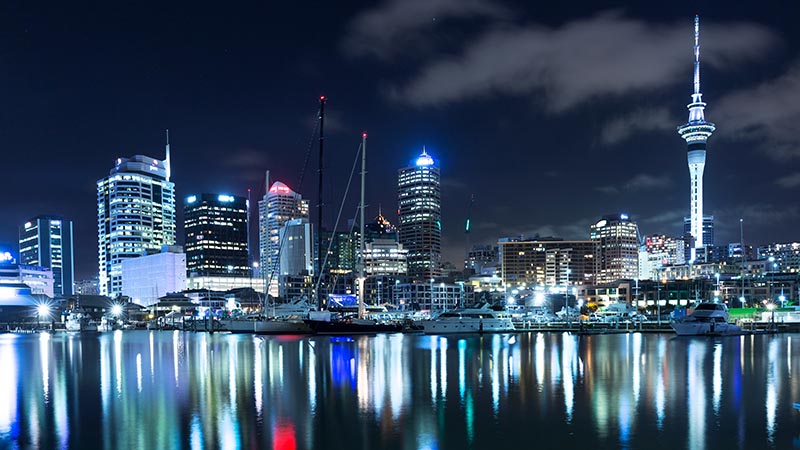How does Australia's sliding property market stack up against the rest of the world?
API Magazine's editor has dusted off the passport to travel the world comparing international property markets with Australia's.
Australian property prices are on a downward slide but in the social media age of obsessing about what everyone else is doing, it’s worth asking how we’re faring against countries in the rest of the world.
The so-called world bank, the International Monetary Fund, has delivered its mixed news for Australia, forecasting that the country will avoid a recession but predicting property fall another 10 per cent, on top of the roughly 5 per cent fall already experienced by most state capitals.
The IMF had some news for borrowers, warning the Reserve Bank of Australia must continue to raise interest rates to rebalance domestic demand and keep inflation anchored.
Given declining house prices and Australia’s inflation at 7.3 per cent, marginally below world inflation at 7.4 per cent, the world bank said monetary and fiscal policy tightening was needed.
As Australian homeowners contend with higher interest rates and tumbling house and apartment prices, they may be able to take solace that they’re in good company internationally.
Only a year ago Australia and the rest of the advanced economies of the OECD were undergoing the fastest pace of house price growth since OECD records began.
In 41 countries, from the Netherlands to New Zealand, house prices were rising, bolstered by record low borrowing costs and buyers with savings to spend.
But the economic shockwaves caused by Russia’s invasion of Ukraine has turned the global economy upside down, and from Japan to the United Kingdom, households have been hammered by rapidly rising interest rates, stagnant wages, and rampant inflation.
Australians can take heart that the IMF’s rather dire property outlook down under isa reflection of global housing markets that are at a “tipping point”.
“As central banks around the globe aggressively tighten monetary policy to tackle price pressures, soaring borrowing costs and tighter lending standards, coupled with stretched house valuations, could lead to a sharp decline in house prices,” its global financial stability report said.
Australia’s property market is now defined by a lack of supply, soaring rents, retreating property prices and higher inflation causing interest rate rises.
While few of us had the foresight to buy property in Turkey a couple of years ago – house prices have risen 160 per cent year-on-year – we can be proportionately relieved if we resisted buying property in Colombo, Sri Lanka, where year-on-year prices have fallen more than 35 per cent.
So just how different, or similar, is the situation in other countries and major capitals, especially those popular with Australian travellers, expatriates and investors.
United Kingdom
The London and wider United Kingdom property market is cooling as interest rate rises start to take effect but prices are still close to their record peaks of a year ago.
In London, the average dwelling price dipped 0.6 per cent to £544,113 (A$964,000) in September, the biggest monthly fall since July last year.
That eased the annual rate of increase from 7.3 per cent to 6.9 per cent but prices are still only a few thousand pounds below the record £547,319 ($969,400) reached in August.
Like Australia, the market has been squeezed higher by a shortage of properties for sale but unlike Australia, there has been stampede of buyers keen to get on the property ladder before mortgage rates rise to unaffordable levels.
Across the UK, the average house price in September was £295,000 (A$522,500), which was $46,000 higher than a year earlier, the Office for National Statistics said. Average house prices increased by 9.5 per cent over the year to September 2022, slowing from 13.1 per cent annual growth in August 2022.

A major difference between the two countries, is the degree of political stability. While Australia has a stable government in place with a working majority in parliament, the UK’s political chaos and subsequent mini budget towards the end of the month sparked unprecedented volatility in the mortgage market.
As US and other international buyers make moves into UK property to capitalise on the sinking pound, economists have warned house prices could fall by as much as 15 per cent if interest rates continue to rise.
With Australia’s banks making similar predictions, the Australian and UK property markets seemingly have more in common than apart.
Hong Kong
The political machinations of the United Kingdom look like a veritable picnic compared to the upheaval that has upended the lives of Hong Kongers.
As well as the universal impact of interest rate hikes, Hong Kong’s property market has been battered by a population exodus following the collapse of the one-country two-systems framework that had previously enshrined a free press and personal freedoms to rival the United States.
The economy is contracting, multinational companies are downsizing or relocating and property prices are mirroring the abject mood exacerbated by long-running and harsh Covid restrictions.
Australian property owners bemoaning their easing property prices can perhaps spare a thought for those in the metropolis once known as Asia’s World City.
Prices of used homes have declined 11 per cent since the beginning of the year. Goldman Sachs Group is expecting values to plummet 30 per cent through 2023 from last year’s levels.
The number of unsold new homes in Hong Kong increased to the highest in more than 15 years in the third quarter, while major developers are offering large discounts in an attempt to offload vacant units.
New Zealand
Australian residential property listings slipped by 18 per cent for the year in October, with Melbourne and Sydney tanking 29 and 31 per cent respectively.
While Australia struggles with a massive housing supply shortage, New Zealand has now seen an annual nationwide supply increase for 13 months in a row.

Source: Trade Me
As a result, the number of homes listed for sale across New Zealand jumped by 43 per cent year-on-year, marking the highest annual number of listings for an October on record.
Property prices across the ditch are also starting to climb again.
In October, the median house price was A$754,800 - up $13,700 or 1.9% since September. That's still 7.5 per cent lower than it was a year ago.
As with Sydney and Melbourne, the biggest value losses over that time were in New Zealand’s two biggest cities, Auckland and Wellington.
Dubai
Dubai’s volatile property market has shaken off the doom and gloom of much of the world.
Property prices in the United Arab Emirates’ financial hub have risen significantly throughout the year.
Average prices rose by 8.5 per cent for apartments and 13 per cent for villas, in the year to October, data compiled by property consultancy CBRE showed.
Whereas Australia’s national dwelling values fell 1.2 per cent in October, month-on-month there was a 1.4 per cent increase in Dubai apartment prices and a rise of 0.7 per cent for villas.
And as Aussie buyers and sellers face off in a waiting game, Emiratis are flocking to properties on sale. Total transaction volumes are at their highest level since 2009. In October residential property deals registered a 72.5 percent increase from the prior year.
Prime real-estate prices surged 89 per cent over the past 12 months through October, making it the biggest gainer on Knight Frank’s global index, much it driven by wealthy Asians fleeing Covid lockdowns and Russians evading sanctions at home.
If there’s one area Australia and Dubai share something in common, albeit it an unwanted attribute, it’s the building delays and construction issues besetting both markets.
Bloomberg reported off-the-plan buyers of luxury villas on the largest but least developed of Dubai’s famous palm-shaped artificial islands have waited as long as 14 years for construction to begin.
As with all parts of the world, soaring materials prices and global supply chain challenges are posing risks for developers in Dubai and hampering completion of property projects.
























